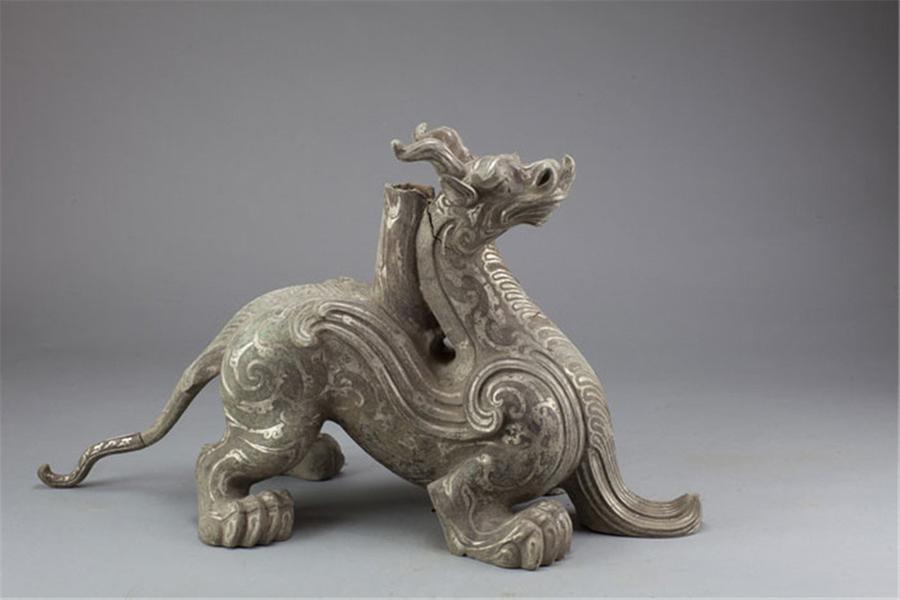China's major archaeological finds in last five years (part 1)

 |
| Bronze figurine of a beast is unearthed from the Western Han Jiangdu Imperial Mausoleum in Xuyi, Jiangsu province. [File photo] |
Western Han Jiangdu Imperial Mausoleum in Xuyi, Jiangsu province
Liu Fei's mausoleum has been found in present-day Xuyi county, East China's Jiangsu province.
Threatened by quarrying, archaeologists from the Nanjing Museum performed a "rescue excavation" of the site from 2009 to 2011.
The mausoleum contains three main tombs, 11 attendant tombs, two chariot-and-horse pits, two weaponry pits and the remains of an enclosure wall that originally encompassed the complex.
Together, more than 10,000 sets of fine artifacts, such as exquisite items made of bronze, silver, gold, and jade, have been unearthed.
Later, evidence showed the deceased in tomb No.1 was Liu Fei, first king of Jiangdu State of the Western Han Dynasty.
The Western Han Jiangdu Imperial Mausoleum in Xuyi of Jiangsu province was listed as one of China's top 10 archaeological discoveries in 2011.
- Academy releases top 6 archaeological finds of 2015
- Inside Ruins of Yin: One of China's oldest archaeological sites
- Live broadcast of archaeological excavation at Old Summer Palace in Beijing
- China's major archaeological discoveries in 2016
- Archaeological exhibition staged at Capital Museum in Beijing
- 'Book of Songs' from Chinese imperial tomb proves oldest complete copy ever found
- Exhibition highlighting the 'Two Airlines Incident' opens in Tianjin
- Average life expectancy in Beijing rises to 83.93 years
- Energy drink overdose sends delivery worker to hospital
- GBA and Hainan deepening cooperation to boost innovation and sustainable growth
- Beijing mulls including the costs of embryo freezing and preservation in medical insurance





































